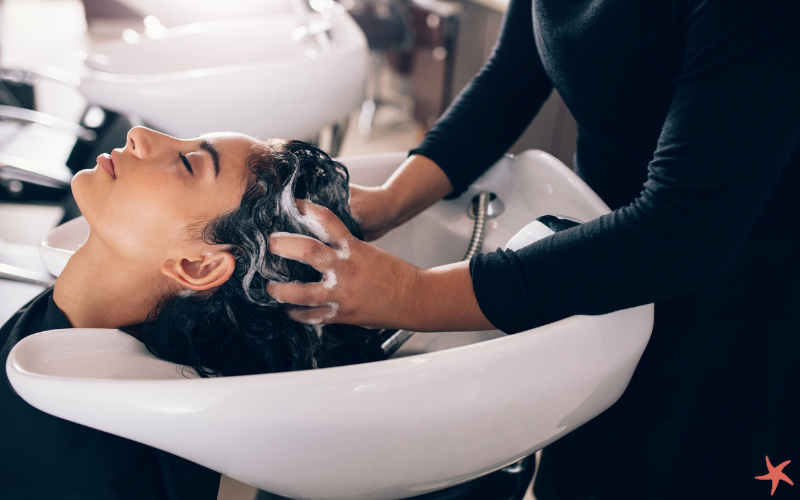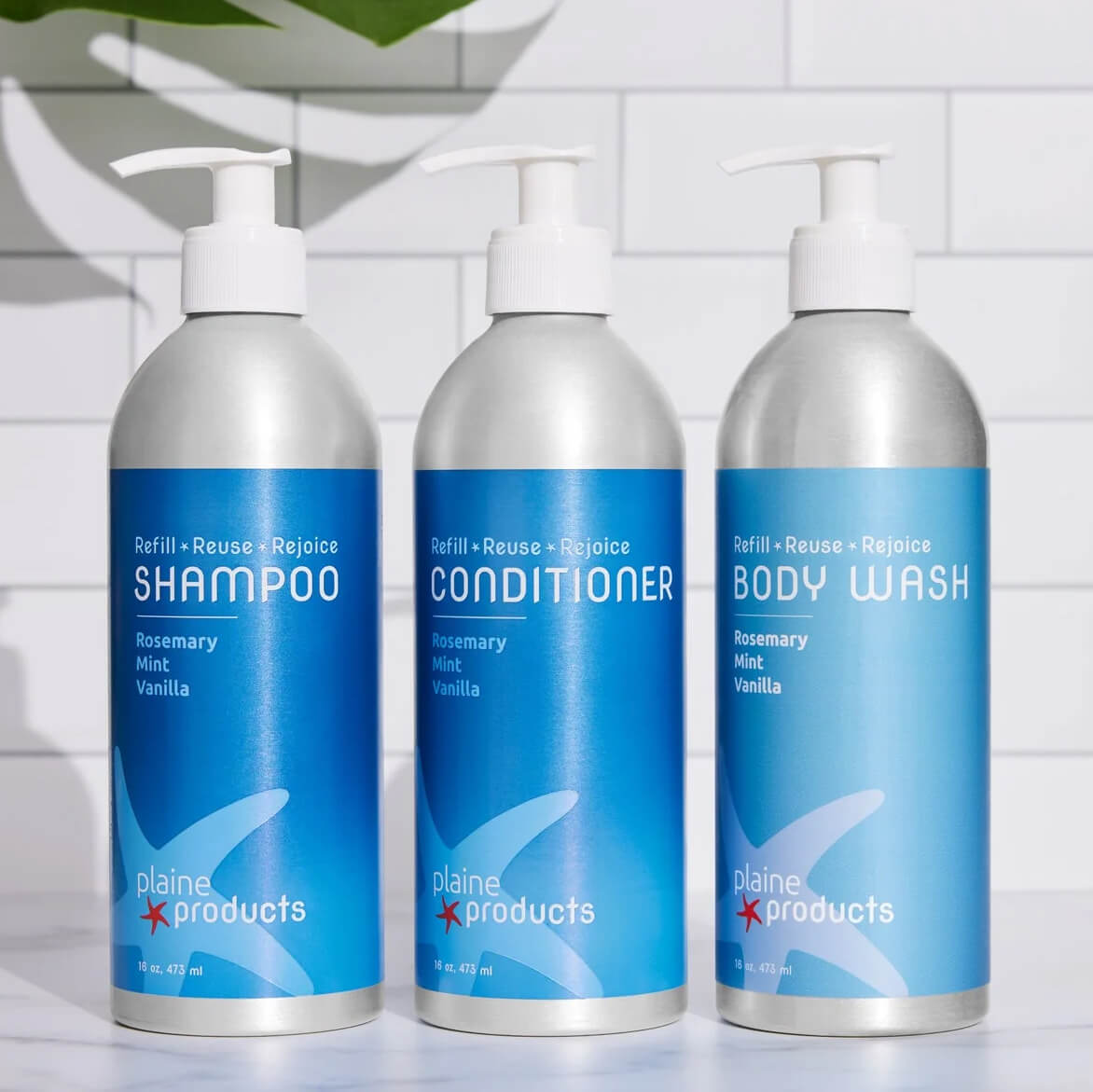Blog
Curly Hair Guide
Did you know there are 9 different curl types?! We help you identify your curl type and share how you can keep your curls happy.
Learn moreOur Stance on Organic Ingredients
Have you ever wondered why the majority of Plaine Products' ingredients are not organic? Recently we’ve had several questions about this, and we thought it best to share some insight. We want you to know what the term “organic” means in the personal care industry, the issues with suppliers, and why it’s not something we plan to focus on at this time. Read on to find out why we prioritize ingredients that are toxin-free, and sustainably sourced, over being organic. Industry (Un)Regulation While the Department of Agriculture (USDA) regulates the use of the term “organic” in the food industry, they don’t regulate it in the personal care industry, as that falls outside of their authority. That falls to the Federal Drug Administration (FDA). I use the term ‘regulate’ loosely because the FDA does not define or regulate the term “organic” in regard to personal care products at all. However, personal care products can still become organic certified under the USDA's National Organic Program (NOP), if the product is made up of agricultural ingredients. The product must meet the NOP’s requirements for production, handling, processing, and labeling to be eligible for certification. Even so, this doesn’t mean that the NOP has the authority to regulate organic label claims on all personal care products. They can only regulate the products and manufacturing operations that voluntarily choose to meet their organic standards and go through their certification process. With the FDA not defining the term and the NOP only regulating certain companies, this means the term “organic” can be used in the industry without specific proof or certification. This certainly muddies the waters for personal care companies when sourcing their ingredients and finding trustworthy suppliers. Our Manufacturers' Reality While we think it would be great to have a certified organic product, we’ve decided against it for the time being after doing the research and talking closely with our manufacturer. To be able to say “made with organic ingredients” on our labels we would have to use no less than 70% certified organic ingredients. In order to carry the USDA Organic Seal our products would have to have no less than 95% certified organic ingredients. These requirements would create a lot more work for the manufacturers to vet these companies to ensure they are actually certified, which would drive up costs. Remember, “organic” isn’t a regulated term by the FDA, so suppliers could be using it without having proof or certification. When speaking with our manufacturer, they felt that it was no longer the best measure to use in selecting suppliers. They are more concerned with the quality of the ingredients, supplier reliability, and distance from the manufacturer. While organic farming practices are beneficial to the environment, the shipping emissions to transport them from farther away could negate the farming benefits. This is a reality we would face if needing to choose from only certified organic suppliers. Instead of choosing organic, we prioritize ingredients that are high quality, non-GMO, free of toxins and harsh chemicals, palm oil free, vegan, biodegradable, and as local as we can get. As with all things sustainable, there are always tradeoffs to be made. We want to be transparent about the choices we make. Our goal is to work closely with our manufacturer to ensure you’re getting a safe, effective, environmentally friendly product every time. If learning about ingredients in your personal care products is interesting to you, stay tuned for our monthly ingredients blog posts!
Learn moreHelp for Static Prone Hair
While it's hard to know exactly what is causing your static hair, the colder weather of winter is certainly not helping. We have a few suggestions for helping to combat the static in your hair. What Causes Static Hair? When the weather gets cooler outside and we turn our heat on indoors, the dry air can dry our skin and hair and cause static. Your hair is literally building up an electric charge that makes the strands of your hair repel each other. This can leave your hair frizzy and standing on end. What can I do to prevent it? We turned to our resident hair expert, Krysia, for her suggestions on getting the static out of your hair. Here's what she had to say: A humidifier in your house can help add some moisture back into the air. Try using a cotton t-shirt instead of a towel when getting moisture out of your hair after the shower. Sometimes a towel can roughen up the hair cuticle and cause frizz and static. A wooden or metal comb is better than plastic because plastic is non-conductive and causes static electricity when you comb your hair. Skipping hot tools and opting for air drying your hair can also help. Can Plaine Products help? Try a deep conditioner treatment with Plaine Products deep conditioner. Both our Cherry Almond Shampoo and Deep conditioner contain sweet almond oil, which is especially nourishing and helps to combat frizz. It also promotes shine and can help prevent hair breakage. To use, shampoo your hair as usual and then apply a small amount of Deep Conditioner to wet hair, focusing on ends. Leave on for 5 minutes and rinse thoroughly. For extra hydration or for damaged hair, leave the deep conditioner on for 5-30 minutes with a shower cap before rinsing. This will add some extra moisture to your hair. Spritz the ends of your hair with Plaine Products Hair Repair before blow drying as a heat protectant, to detangle, seal in moisture and repair split ends. Plaine Products Hair Repair replenishes moisture in the hair and can be used in place of a conditioner on fine hair, or after conditioning as a detangler for thick or curly hair. Simply spray on damp hair focusing on the ends and air dry or blow-dry as usual. Plaine Products Beauty Oil can be used on damp or dry hair, before using hot tools or to let hair air dry. Run it through damp curls to define and tame frizz or dab a bit on dry hair to tame fly-aways and avoid static. Lighter than Argan Oil, this oil is a hydrating blend of Helianthus annuus (sunflower) seed oil, Vitis vinifera (grape) seed oil, squalene (olive derived), and Simmondsia Chinensis (jojoba) seed oil and can be applied to the ends of hair to tame flyaways, frizz, and bring the shape back to curls. Plaine Products Styling Gel is perfect if you like a slicked back look or want to tame flyaways. It's a lightweight gel that will tame your static without weighing your hair down or making it look greasy. For even more winter hair care tips, be sure to check out this blog post:Winter Hair Care Tips for Healthier Hair this Winter
Learn more




